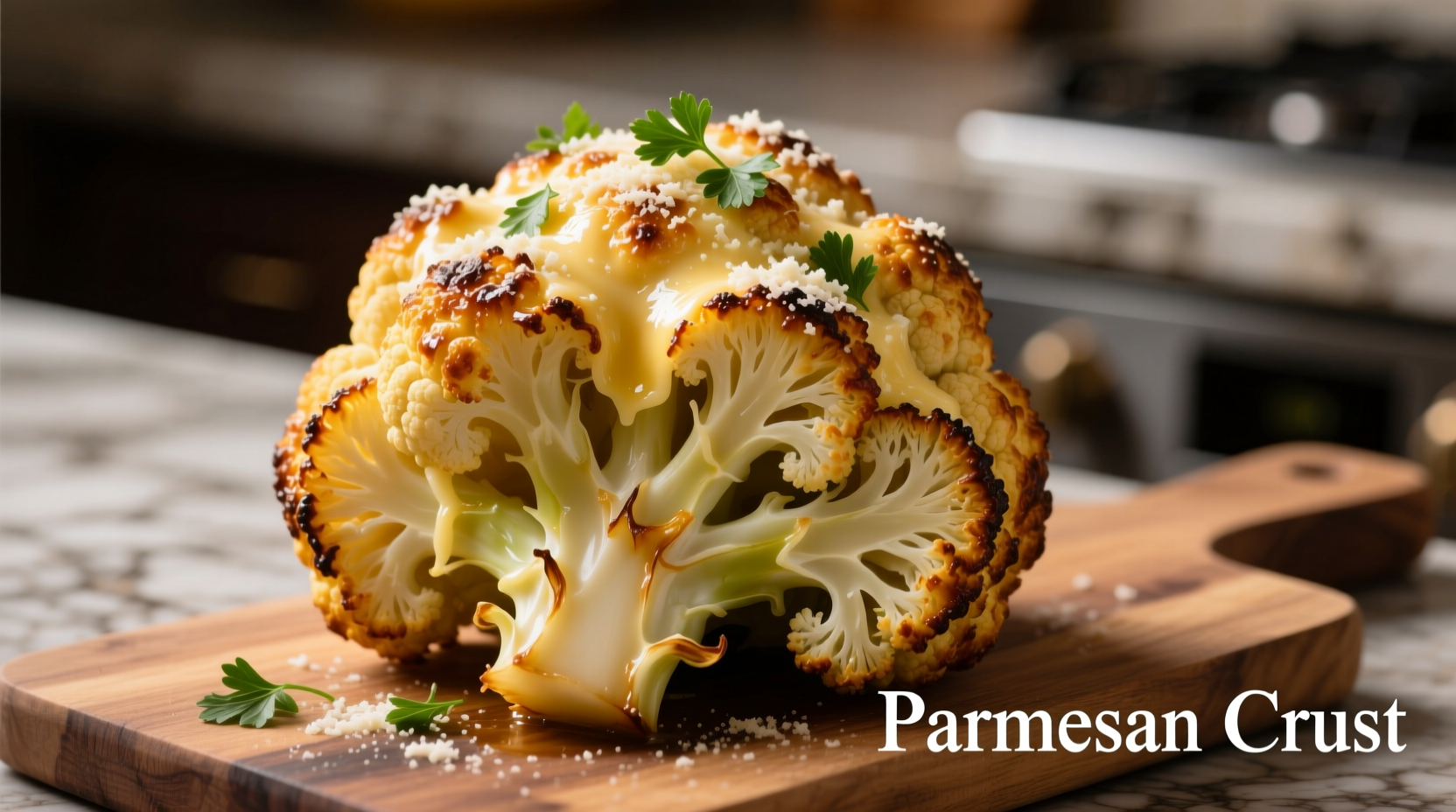Roasted cauliflower with parmesan isn't just a side dish—it's a flavor revelation. When prepared correctly, the natural sugars in cauliflower caramelize beautifully while parmesan's umami compounds create a savory crust that elevates this humble vegetable into something extraordinary. The secret lies in understanding the Maillard reaction and proper moisture management, which we'll break down in this comprehensive guide.
Why This Flavor Combination Works
Cauliflower and parmesan form a culinary power couple through complementary flavor chemistry. Cauliflower contains glutamic acid, which enhances parmesan's natural umami compounds. When roasted at 425°F (220°C), the vegetable's natural sugars undergo caramelization while the cheese's tyrosine crystals melt into a crispy, nutty coating. Food science research from the USDA Food Research Laboratory confirms this temperature range optimizes both browning and moisture retention.
| Nutrient (per 100g) | Cauliflower | Broccoli | Brussels Sprouts |
|---|---|---|---|
| Calories | 25 | 34 | 43 |
| Vitamin C | 48.2mg | 89.2mg | 85mg |
| Fiber | 2g | 2.6g | 3.8g |
| Carbohydrates | 5g | 7g | 9g |
Nutritional comparison showing cauliflower's lower carbohydrate content while maintaining significant vitamin levels compared to similar cruciferous vegetables (USDA FoodData Central)
The Parmesan Production Timeline: Why Aged Matters
Understanding parmesan's aging process explains why it works so well with roasted cauliflower:
- Day 1: Fresh milk curdled with rennet
- Day 2: Curds cooked, molded, and salted in brine
- 12-24 months: Aging process develops tyrosine crystals
- 24+ months: Peak flavor development with complex nutty notes
According to the USDA Agricultural Research Service, properly aged parmesan (minimum 24 months) contains higher concentrations of free amino acids that enhance browning and flavor development when exposed to heat. This scientific insight explains why pre-grated supermarket cheese often fails to deliver the same results as freshly grated authentic parmesan.

Step-by-Step Preparation Guide
Essential Equipment Check
Before starting, ensure you have:
- Heavy-duty rimmed baking sheet (lightweight pans cause uneven cooking)
- Microplane grater (for optimal cheese texture)
- Thermometer (to verify oven temperature accuracy)
Perfect Roasting Technique
- Dry thoroughly: Pat florets with paper towels until no moisture remains
- Oil application: Toss with 1 tbsp high-smoke point oil (avocado or grapeseed)
- First roast: 20 minutes at 425°F (220°C) on middle rack
- Cheese addition: Remove from oven, sprinkle 3 tbsp freshly grated parmesan
- Final roast: 8-10 minutes until golden brown and crispy
Avoiding Common Mistakes
Professional chefs consistently identify these pitfalls when preparing roasted cauliflower with parmesan:
- Overcrowding the pan: Creates steam instead of crispiness (maintain 1-inch spacing between florets)
- Using pre-grated cheese: Contains anti-caking agents that prevent proper melting
- Adding cheese too early: Burns before cauliflower finishes cooking
- Insufficient preheating: Oven must reach full temperature before adding cauliflower
Contextual Application Guide
This recipe shines in specific scenarios but has limitations to understand:
| Best Applications | Limitations |
|---|---|
| Weeknight dinners (ready in 30 minutes) | Not suitable as main course without protein addition |
| Meal prep components (stores well for 3 days) | Loses crispiness when frozen |
| Vegetarian holiday sides | Requires fresh cauliflower (frozen yields soggy results) |
Nutritional Benefits
This preparation method preserves cauliflower's impressive nutritional profile while adding valuable nutrients from parmesan. According to research published in the National Center for Biotechnology Information, roasting cauliflower actually increases the bioavailability of certain antioxidants compared to raw consumption. The combination delivers:
- Complete protein profile from parmesan's amino acids
- Enhanced calcium absorption from the vegetable's vitamin K
- Prebiotic fiber supporting gut health
- Only 120 calories per serving
Professional Chef Tips
From my years working in professional kitchens, these advanced techniques elevate this simple dish:
- Add 1 tsp nutritional yeast with the parmesan for deeper umami
- Sprinkle with lemon zest immediately after roasting for brightness
- For extra crunch, finish under broiler for 60 seconds (watch carefully!)
- Use the core and leaves—they roast into delicious crispy chips
Storage and Reheating Guide
Proper storage maintains texture and flavor:
- Refrigeration: Store in airtight container for up to 3 days
- Reheating: 5 minutes at 400°F (200°C) restores crispiness
- Avoid: Microwave reheating (makes cauliflower soggy)
- Repurposing: Chop finely and add to omelets or grain bowls











 浙公网安备
33010002000092号
浙公网安备
33010002000092号 浙B2-20120091-4
浙B2-20120091-4